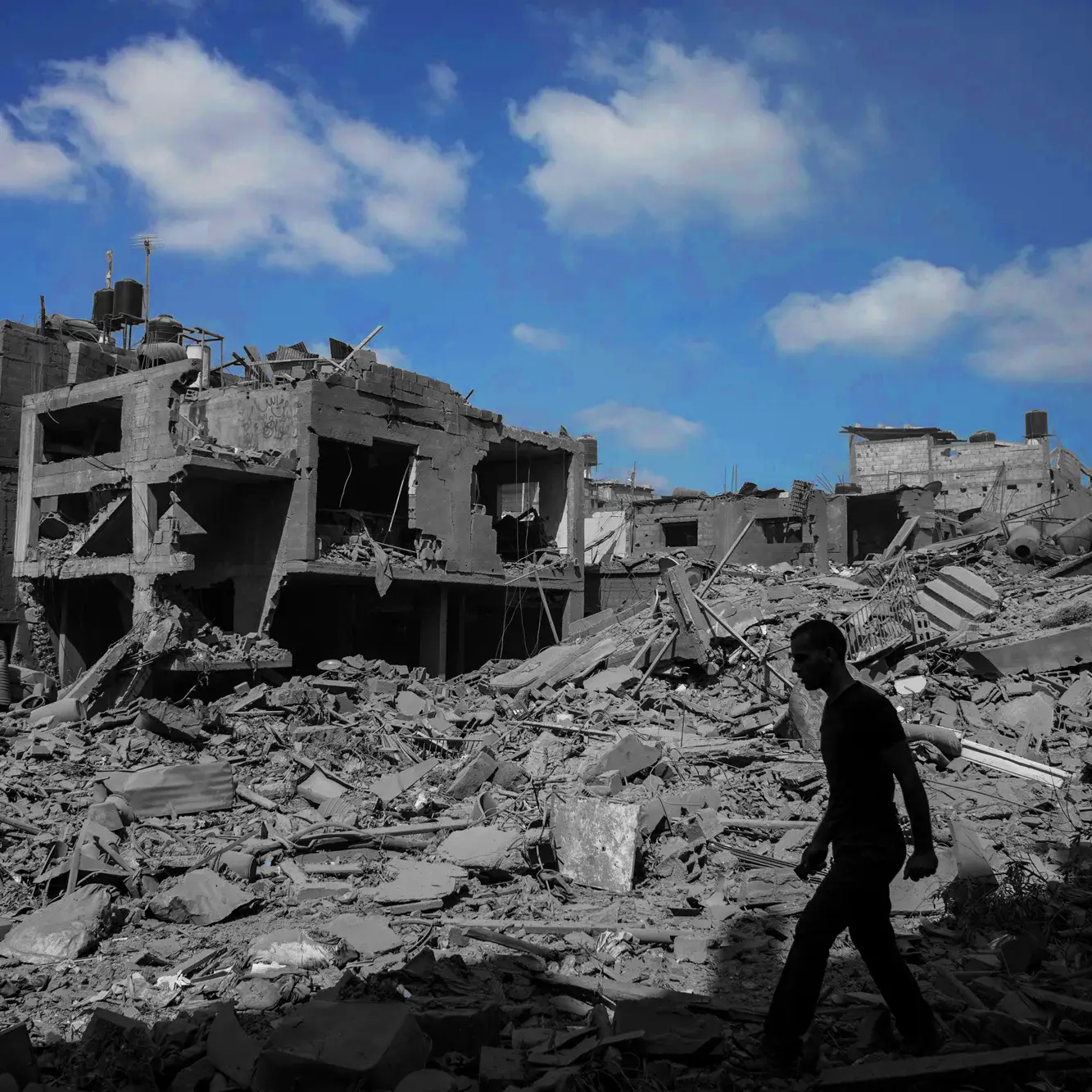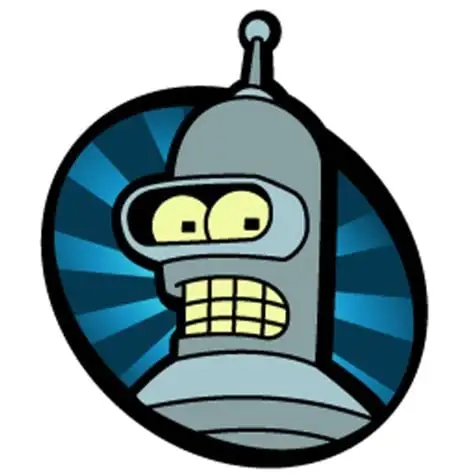The Technical Manual explanation is not that replicators create matter out of pure energy - they are a type of transporter that dematerializes raw material and rematerializes it to match a molecular pattern. They are “matter-energy converters” only in the sense that the stream of particles during the materialization process could be called an energy stream.
These replicator system headends are located on Deck 12 in the Saucer Module [of the Enterprise-D] and on Deck 34 in the Engineering Section. These systems operate by using a phase-transition coil chamber in which a measured quantity of raw material is dematerialized in a manner similar to that of a standard transporter.
Instead of using a molecular imaging scanner to determine the patterns of the raw stock, however, a quantum geometry transformational matrix field is used to modify the matter stream to conform to a digitally stored molecular pattern matrix. The matter stream is then routed through a network of waveguide conduits that direct the signal to a replicator terminal at which the desired article is materialized within another phase transition chamber.
Was about to cite TNG Tech Manual as well - although that also said that holodeck characters’ bodies were replicated meat puppets, which I think they didn’t stick with.
It thankfully stops short of “meat”:
Such animated characters are composed of solid matter arranged by transporter-based replicators and manipulated by highly articulated computer-driven tractor beams. The results are exceptionally realistic “puppets,” which exhibit behaviors almost exactly like those of living beings, depending on software limits.
Objects created on the Holodeck that are pure holographic images cannot be removed from the Holodeck, even if they appear to possess physical reality because of the focused forcebeam imagery. Objects created by replicator matter conversion do have physical reality and can indeed be removed from the Holodeck, even though they will no longer be under computer control.
Obviously, there is an inconsistency here, as we saw that later holographic characters could not be removed from the holodeck, and therefore must not have been replicated.
AFAIK they’re made from forcefields and photons, not matter and tractor beams. Or are tractor beams forcefields?
Tractor beams and force fields are actually both supposed to be applications of graviton technology, so…kinda?
But no, I don’t think that bit of the Technical Manual is very consistent with how we saw the holodecks actually being used.
Admiral Vance:
“It’s made of our shit, you know?”
apple crunch “Tastes pretty good for shit.”
IIRC there are 3 different methods seen for food creation in Star Trek.
Protein Resequencers (ST:ENT, ST:TOS): which presumably take stored amino acids and combined them with supplementary minerals and flavouring into nutritious cubes that look like marshmallows.
Matter Recombinators/Food Sythesizers (ST:TOS): capable of taking stored matter and producing ‘simple’ foodstuffs like drinks, iced cream, slabs of protein similar to chicken breast or steak, etc. I think these were sometimes called replicators but the distinction is the production is done elsewhere and the food delivered in seconds on request.
Replicators (ST:TNG +): I swear they described this as direct energy to matter conversion but I can’t find the source for this. The seemingly ridiculous energy demands this requires can be justified by the fact they use matter+antimatter reactions for energy supply. A cup of water would take a cup of fuel give or take. (edit: To confuse the issue, it’s also described in Discovery that waste matter is broken down and used for things like replication, but matter=energy so it is all the same in the end).
Transporters: it’s been clear from the beginning the matter is being deconstructed into energy and sent to the destination where it is reconstructed using the original’s pattern. The ethics of it are dubious because every time you see someone transport they are being literally killed in front of your eyes and a new copy created elsewhere.
The ethics of it are dubious because every time you see someone transport they are being literally killed in front of your eyes and a new copy created elsewhere.
They “nuh-uh’d” this in Enterprise. The inventor of the technology is introduced and basically says the people who propagate that theory are a constant thorn in his side, despite having no basis for it in the reality of that universe.
They also show people experiencing, and reacting to other things in, the matter streams during longer transports. Kind of hard to do if you’re dead.
They “nuh-uh’d” this in Enterprise. The inventor of the technology is introduced and basically says the people who propagate that theory are a constant thorn in his side, despite having no basis for it in the reality of that universe.
You’re welcome to believe the inventor if you wish, but I’d ask if you also believe the CEO of Boeing when he says their planes are safe…
They also show people experiencing, and reacting to other things in, the matter streams during longer transports. Kind of hard to do if you’re dead.
Yeah I can see why this’d be confusing. Keep in mind the transport process at the referenced time periods takes ~ 6 seconds. 3 to dematerialize, near instantaneous travel to the destination, and 3 to rematerialze. It is that part in the middle which makes it clear the person has died. Being conscious in the matter stream and hence thinking you’re the same person is the result of it being a near-perfect copy.
There are far more examples that refute the inventor:
- Dr. Mbemba kept his daughter stored in a transporter buffer for months. She retained no memories of during her storage. Her brain and heart both stopped. This is clinical death by definition. Thus,
- every time the transported are held within the buffer completely for any period of time (seconds while they disarm weapons, or decide what to do with them on screen) they are clearly dead and a floppy disk is being discussed.
- Thomas Riker’s accident creating Wil’s duplicate. People are almost literally photocopies of a destroyed original by this example alone.
I think you give valid examples and make your point well.
However, another weird thought is perhaps we’re always slowly dying to some extent. For instance, you at age 7 is dead; today, yourself at age 7 cannot speak or act or think. For instance, in a situation where your young self may have tried to buy a toy, you have different wants and make different decisions - you cannot perfectly replicate what that past self would have wanted.
This might be true even of myself from five seconds ago - I hadn’t thought of a certain wording of this concept yet, and so might have worded it differently under different circumstances - that “me” is gone and can’t do anything. This could be true even a millisecond ago, or a duration approaching either an instant or perhaps one cycle based on whatever the “clock rate” (if there is such a thing) or the human brain is.
However, to function, we need a convenient abstraction for what life and death are. I think my definition of life would be when one particular sum of experiences permanently terminates its (mostly) granular evolution.
Thomas and Will Riker both evolved from the same sum of experiences of the original William T Riker; since those sums of experience are still evolving, he is, within our convenient definition, alive.
You’re welcome to believe whatever fantasy you want, too, it’s not reality after all :)
If you choose to believe your version of events, and whatever justification you need to use for it, feel free. We can both ignore each others reasoning just fine, I’d imagine.
How does a Tom Riker happen then? How are you able to completely duplicate an entire being if the original isn’t being “killed” and then a new copy created in the new location.
Two transporter beams, a weirdly reflective at.osphere that only exists in a single planet in the known universe, and plot devises intended for the sole purpose of that one story.
Most of which are explained in that same episode if you’d actually pay attention to it.
So… and I’m in no way a Memory Alpha-level ST nerd, caveat lector:
- transporters are matter-to-energy-to -matter transformers; which implies
- they have both energy-to-matter conversion technology, and matter-to-energy technology; which means
- assuming the conversion process itself isn’t using vast quantities of energy, they could easily be turning energy into matter, and powering it with matter to energy, losing some energy in the conversion tax; which means
- they may as well be turning humanoid waste into food
It would imply that transporter and replicator technology are, basically, the same thing.
However, there are cannon issues.
- Even assuming metaphysics beyond what we know, they’d have to be violating the laws of thermodynamics to get more efficient energy production than matter-to-energy conversion. Which would make dilithium crystals and such less efficient than the technology they use to create food… so, why use it? Well, because
- The conversion process isn’t low cost. They can transport people, and produce from from energy, but it’s a super-expensive process. Like, you lose 90% of your energy in the matter:energy:matter cycle, out something. Which would mean
- Transporter technology isn’t converting things to energy and back; it’s using some cheat that does the same thing effectively, but with constraints, such as limits on how much you can alter the source object to destination object in the process; and getting pure energy out of matter is really lossy. But if you go from baseball to baseball, but in a different place, you avoid the energy penalty.
My head cannon is that this is how both replicators and transporters work. If you take a Riker and turn him into Riker somewhere else via a conversion loophole, it’s pretty cheap. If you take a 236g of lead and turn it into a cup of Earl Grey (hot), it costs you some energy loss but you’re using basically the same loophole. But if you try to turn Riker into pure energy to power the Enterprise because the warp core is offline, really you only get a couple of grams of usable energy because you can’t use the loophole and most went into the conversion process – which is why they still need an efficient fuel like dilithium.
Like, matter-to-energy requires antimatter, which is expensive to produce; but the loophole lets you skip over the antimatter part as long as, in the end, you have basically the same sort of matter.
they may as well be turning humanoid waste into foodYeah, they are. Waste matter is reclaimed as energy/supplies for food production
It would imply that transporter and replicator technology are, basically, the same thing. I agree. This is supported by replicators and transporters having a very similar special effect on the show.
they’d have to be violating the laws of thermodynamics to get more efficient energy production than matter-to-energy conversion. I don’t follow here. Why do they ‘have’ to be? They could very well be spending more energy but the increased amount is ‘trivial’ from their perspective. This would not violate Thermodynamics.
Ah I think I see the confusion. They are using antimatter for energy creation. Energy to matter for transport or replication is ‘paid’ for by the matter to energy destruction of the og material (whether it be the transported individual, waste matter collected from the crew, equivalent amounts of reactor fuel, or some combination of these) and the excess cost of thermodynamics is paid for by the matter-antimatter reactions in the reactor.
Is the efficiency miraculous? Yes, ofc. Is it breaking thermodynamics? No. It’s easy to see how they are paying for the excess costs with reactor fuel and that is without any hand-wavium of subspace or dilithium crystals being involved.
Ah I think I see the confusion.
I was saying that there’s nothing, within our current physics, that is not efficient than a matter/antimatter reaction. You get 100% of the energy. Whether or not it’s useful energy is another question, and I’m doing some hand-waving around the topics of containment, manipulation, etc. However, nothing we know of is a more efficient use of matter to generate electricity. Not fission; not fusion; not radioactive decay. If we could wrap a black hole in a Dyson sphere and capture Hawking radiation, it’d still be less efficient than M/AM annihilation.
I was saying that - barring a magic technology such as capturing usable energy from quantum fluctuation, saying ST has a form of energy production that is a matter-based energy production that is more efficient than M/AM annihilation would violate our known laws of physics, because introducing a hydrogen atom to an anti-hydrogen atom is 100% efficient and costs nearly nothing to effect.
ST is full of magic technologies, and carrying around a bunch of AM as part of a way to play Mozart in the ready room is really dangerous, so - maybe they use it a bit, but they rely on more stable, less dangerous energy sources like dilithium. Anyway, trying to mix hard science and Star Trek is a dangerous endeavor. ST is more hard-sciency than the Space Wizards in Star Wars, but there’s still a vast amount of speculation required to make things work.
The replicators work very well, thank you.
Well, as noted in that conversation, it wouldn’t work in the real world.
My understanding of canon is that transporter technology does use the energy produced by the warp core to deconstruct matter into energy, then reconstruct it at the desired location.
In that process, a computer has to hold the “pattern” long enough to make the transition possible. Hence pattern buffers.
Replicators use the same method, but have what amounts to better memory, and lower resolution.
A transporter can reconstruct things to such a small scale that every synaptic connection remains intact. Replicators can’t. They are, barring some exceptions that don’t really make sense, unable to produce anything alive.
A replicator cab only produce something it has a “recipe” for. At some point, someone used a transporter or similar device to deconstruct a given thing, like a hot cup of tea. That “pattern”, rather than being held in volatile memory, was recorded. Iirc, in the novels it was Spock that helped refine the technology to be as useful as it would be in TNG, but I haven’t read those in ages.
So, when Picard wants “earl grey, hot”, the replicator pulls up the pattern, uses the energy from a source that isn’t well specified, and turns that energy into matter. Literally every single cup of that tea is going to be the same, within the ability of the replicator to resolve. Since tea isn’t complicated in terms of long chains of molecules, it should be the exact same cup of tea.
However! There were instances I recall seeing of people adjusting replicator files. Tweaking them to their liking.
And, there’s on screen use of big replicators to turn out shuttle parts, as in body pieces.
There’s apparently an upper limit on complexity, which was supposedly about not wanting to make things too easy and make it harder on writers to come up with viable plot points. After all, if you can just replicate entire ships, things get crazy fast. “Oh, the Klingons are invading? Let’s churn out a few dozen extra battle cruisers”
one of latinums things was it can’t be replicated.
That isn’t actually stated anywhere, but…it kind of has to be true in order for latinum to work.
I swear its been stated by characters in ds9
I don’t think so - I’ve never been able to find it.
Had to look this up on Memory Alpha. The base principle for both replicators and transporters is confusingly termed “matter-energy conversion”, yet doesn’t appear to create matter from pure energy. Rather, it seems to use energy to convert matter from/to atomic or subatomic particles (for replicators and transporters, respectively). During the process, the matter is “energized”, and - I’m no expert, but - I’d imagine the subatomic particles in the transporter’s matter stream exhibit energy-like properties.
So replicators do rely on atomic matter stores (often recycled from waste or unnecessary items), and I’d still expect the conversion processes to use a lot of energy, but not as much as creating the raw matter.
This is sort of what I imagined it would be. Maybe stored as up quarks, down quarks, and elections? Quarks, leptons, and bosons?
I am WAY outta my depth.
So first, it’s assumed that the transition between matter and energy has evolved to be essentially lossless in the trek canon, and you just have to assume that’s true. This is handled with the “Matter-energy conversion matrix” which is a hand-wavey sci-fi invention like a “Heisenberg Compensator.” See https://memory-alpha.fandom.com/wiki/Matter-energy_conversion_matrix
Additionally, this process is bidirectional; waste on a starship is converted into energy and stored. This is done with the “bio-matter resequencer” and is referenced a few times, see:
If you can convert mass into energy and vice versa, that takes care of your huge energy requirement right there. Just turn an apple into energy and you have your 50 Hiroshimas. This also solves the energy storage problem. Just stick it into matter until you need it.
The wiring in a house that carries about 2000W could start a fire if it gets damaged. Imagine what would happen if whatever carries the energy to power a replicator gets damaged.
Why do you think consoles are constantly exploding every time they even bump into something?
Well, if you can convert energy to matter, you can convert matter to energy. So garbage in, Earl Gray out.










